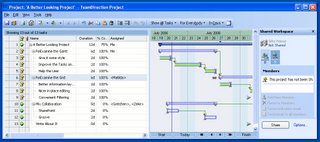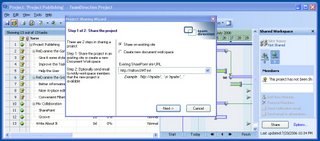The best you could hope for was putting your printer on the network and sharing it. And most of the time it was just hope, because who could divine twisted pair or coaxial, lpt1 or lpt2, queueing or spooling. Usually not the person in front of the computer-- unless that person was in fact Carlos Castaneda.
If you happened to be so lucky as to acheive a fully operational network printer, then you probably reasoned that the man-years it took to achieve this feat would be returned tenfold by the ability to share documents. Your business would reap the rewards of this competitve advantage. Businesses that didn't have network printing would fall in the dustbin of history, and you would rule the.... what's that? That wasn't the right version of the document? Well, maybe print it out again and announce that this is the right version. And then staple it to a visible spot like outside your office, then make ten copies for everyone everyday until you break the printer.
So everyone needed a better solution. Software Architects around the world channeled Carlos and came up with ethernets that could connect desktop computers to each other, and to servers where you could share documents. If you happened to be so lucky as to acheive a fully operational network server, then you probably reasoned that the man-years it took to achieve this feat would be returned tenfold by.... what's that? That wasn't the right version of the document? Julie wrote over your changes? And Bob's? And yours? Well, how about giving one person ownership of the document and trying out this new email thing. If everyone starts using email, the company will enjoy a competive advantage and rule the...
Which is all a very longwinded preface to how you really want to share documents. Honest. And if your business goes on to rule the... well, remember you heard it here first.
How have we solved the problem of sharing documents? Or, actually in our case, sharing projects? By keeping it simple. That is to say, we took a look at well-established, successful patterns of sharing and decided there's no better way than Publishing, Subscribing and Writing Letters to the Editor-- which we'll call Synchronization.
Magazines publish articles and readers who enjoy the articles subscribe to it. As a result, an efficient, mostly one-way, distribution channel is set up. But those letters to the editor are really interesting. While they can apply to the whole magazine, they might also correct a particular article. If the magazine's editor agrees, then he or she may even update the article with the correct information. In a sense, that article has just been Synchronized. That is, the content of the article and the content of the letter have been intelligently merged by the magazine's editor.
And this works great, as long as you have an editor. But a good editor can be hard to find. What would happen if intelligent software could do the merging? Well, you'd have a solution like TeamDirection Project. It's like an editor working for you managing the publication and subscribtion of projects, and all those letters to the editor-- which we call task updates, resource assignments, project rescheduling and such.
Allow me to introduce you to our editor and to our version of Publish, Subscribe and Synchronize.
If you go back a couple posts, you remember the IntelliGantt™ and Task Grid. Here we lift the covers off a third pane: The Shared Workspace. (It should look very familiar to SharePoint users).

This project has not yet been published, so the shared workspace pane isn't very interesting. But if we publish this project, much like publishing a Word document to a SharePoint site:

We see some neat functionality activate:

I can see that I'm active in a project with other people, and that I'm no longer 'Me', but in fact a real SharePoint member. I can see everyones Instant Messaging status and chat with them or send them email. And I can see that the 'Share' button is now 'Synchronize'. This particular example uses SharePoint, but by the end of August you will see this working with Groove 2007 as well.
Because I published this project, I've been assigned to the project task. This means I have the ability to edit any task. I notice task 11 (SharePoint) is behind. Well, an article like this makes me think this is complete. So I mark complete:

And synchronize the changes by hitting the 'Synchronize' button. All done. The task is now marked complete on my view of the project, and on everyone else's view of the project. However, everyone else also sees an update notification on task 11 (SharePoint) and task 10 (Mix Collaboration).

It's our intelligent editor at work. Task 11 contains new information for everyone but me-- the fact that I've finished it. The editor also realized that this affected task 10 as well. Did you see its status changed from behind to on track?
There are a whole host of features supporting Publish, Subscribe and Synchronize, but I wanted to point out that, at its core, its no harder than subscribing to a magazine. A Project Manager publishes a project to a SharePoint (or Groove) workspace. All the members of this workspace receive an invitation they can use to subscribe to the project. But unlike a magazine, each project member has an editor working for them. All project members can make their individual updates, and because of our diligent editor, see the changes of every other project member.
The next post I'll talk about the invitation process a bit more, how you can control membership and assign permissions. But today was about meeting the TeamDirection Project editor. When you have an IntelliGantt™ editor working for you, life, or at least project management, really can be that simple.




No comments:
Post a Comment